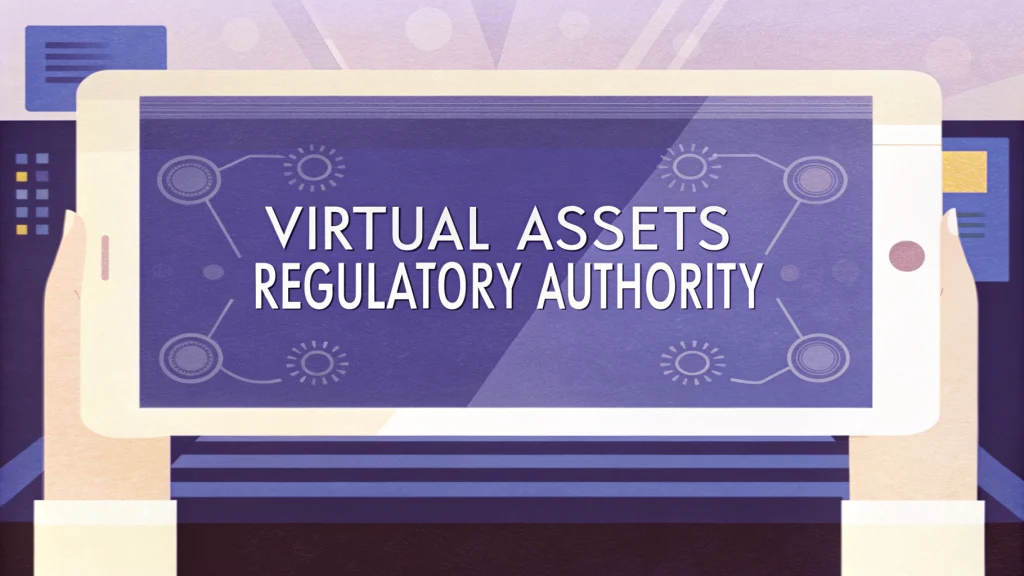Dubai’s Web3 Financial Blueprint: Targeting Global Primacy with Seamless Crypto Payments

Executive Summary
Dubai is executing an ambitious, multi-pronged strategy to cement its position as a dominant global hub for Web3-driven finance. This offensive leverages proactive regulation, substantial digital infrastructure investment, and aggressive cultivation of a thriving ecosystem attracting global giants and nurturing homegrown innovators. Core government directives like the Dubai Blockchain Strategy and the forward-looking Dubai Metaverse Strategy, integrated within the overarching Dubai Economic Agenda D33, signal decisive top-down commitment to blockchain, AI, and immersive tech as key future economic engines. The establishment of the Virtual Assets Regulatory Authority (VARA) provides a clear regulatory framework designed to balance rapid innovation with robust compliance and investor security.
Within this high-velocity environment, efficient, secure, and cost-optimized crypto payment infrastructure is mission-critical for businesses aiming to capitalize on the opportunity. Aurpay emerges as a significant player, positioning itself as a streamlined payment gateway, particularly for e-commerce operators. Its core value proposition hinges on a non-custodial architecture leveraging smart contracts, transaction fees targeting sub-1% levels (a sharp discount to traditional and competing crypto rails), and claims of material gas fee savings.
This analysis dissects Dubai’s strategic playbook for Web3 finance, scrutinizing its core agendas, regulatory architecture, ecosystem build-out, and key incentive structures. It further evaluates Aurpay’s positioning and features as a crypto payment solution, assessing its “seamless” claims against the competitive landscape. The assessment weighs the substantial opportunities embedded in Dubai’s strategy against inherent risks, including market volatility, shifting global regulations, and the persistent demand for stringent compliance protocols.
I. Dubai’s Blueprint: Engineering a Web3 Financial Future
Dubai’s trajectory towards becoming a global Web3 financial center is the outcome of deliberate, government-driven strategic planning, evolving from blockchain efficiency plays to architecting entirely new digital economic sectors.
A. Strategic Imperatives: Unpacking Dubai’s Multi-Billion Dollar Agendas
Dubai’s Web3 ambitions are built on a foundation laid years prior, showcasing consistent commitment to next-generation technology adoption.
- Dubai Blockchain Strategy (Launched 2016, Evolving): Spearheaded by Digital Dubai and the Dubai Future Foundation, this foundational strategy aimed to make Dubai the “first city fully powered by Blockchain” and bolster its goal of being the “happiest city on earth,” as outlined in the UAE government’s blockchain overview. Its implementation rests on three strategic pillars detailed on the official government portal:
- Government Efficiency: This pillar targeted leveraging blockchain for streamlined government operations, aiming for 100% migration of applicable services onto blockchain platforms, according to the official Dubai Blockchain Strategy outline. The projected economic impact was substantial, with estimates suggesting potential savings of AED 5.5 billion annually in document processing alone. Concrete examples include the RTA’s vehicle lifecycle management project using blockchain for transparent tracking and IBM’s work creating a unified blockchain business registry across Dubai’s free zones, a collaboration highlighted in an IBM case study. The objective was seamless, efficient experiences supporting a paperless government transition, a goal detailed in the official Dubai Blockchain Policy. By late 2021/early 2022, reports indicated near-total digitization (99.5%) and 100% achievement of the paperless objective, creating fertile ground for deeper blockchain integration, as noted in government updates on digital transformation.
- Industry Creation: The strategy aimed to catalyze new blockchain-centric industries, recognizing the technology’s potential across diverse sectors.
- International Leadership: A key goal was positioning Dubai as a global pioneer in blockchain applications for cities, sharing insights and cementing its tech hub reputation. The 2016 formation of the Global Blockchain Council was an early move in this direction.
- Dubai Metaverse Strategy (Launched 2022): Building on the blockchain base, this strategy significantly escalates Dubai’s digital ambitions, targeting a top 10 global metaverse economy ranking by 2030, according to Virtuzone’s analysis. The economic targets are formidable: adding an estimated $4 billion to Dubai’s GDP and supporting over 40,000 virtual jobs by 2030. The strategy leverages the existing base of over 1,000 blockchain/metaverse companies, aiming for a fivefold increase, as outlined in the official strategy details. Key focus areas include fostering R&D, promoting advanced ecosystems via accelerators, developing local talent, and investing in metaverse education. It emphasizes leveraging Web3 to create new governmental models and transform sectors like tourism, education, retail, remote work, healthcare, and legal services. Foundational pillars include XR, AR, VR, digital twins, AI, IoT, and blockchain, underpinned by robust data management and 5G, a technological stack detailed in PwC’s Middle East metaverse perspective. Play-to-Earn (P2E) gaming is identified as a major economic engine, viewed as a serious driver of decentralized economies creating real-world income.
- Dubai Economic Agenda (D33): Guiding Dubai’s next decade, D33 aims to double the economy’s size by 2033, a goal highlighted in recent crypto news analyses. Digital transformation is a core component, projected to contribute AED 100 billion annually. D33 includes ambitious targets like nurturing 30 unicorns and supporting 400 high-potential companies. The Metaverse Strategy and Web3 initiatives directly align with D33, positioning future tech as key drivers for the targeted economic doubling.
- AI Integration: Parallel to Web3, Dubai invests heavily in AI. Initiatives like the Dubai Centre for Artificial Intelligence, the DIFC’s AI & Web3 Park (offering 90% subsidized commercial licenses), and the planned Dubai AI & Web3 Festival demonstrate a holistic approach. Reports tracking government AI adoption suggest AI and Web3 are viewed as interconnected pillars of the future digital economy, a perspective echoed in government digital strategy documents.
These strategies reveal a deliberate evolution. The initial Blockchain Strategy focused on internal efficiency and cost savings laid the groundwork. The subsequent Metaverse Strategy marks a significant expansion, targeting new economic sectors, GDP growth, and job creation via Web3 and immersive tech. This reflects a maturing understanding, moving beyond optimization to value generation. Crucially, these aren’t isolated efforts; they are interwoven—Blockchain for trust, Metaverse for immersion, AI for intelligence—and integrated within the overarching D33 economic diversification plan.
B. Building the Digital Foundation: Infrastructure, Hubs, and Global Anchors
Dubai’s strategy hinges on creating the physical and regulatory infrastructure to support a thriving Web3 ecosystem and attract global capital and talent.
- Infrastructure Investments: Recognizing the need for robust foundations, Dubai has invested massively in 5G networks, AI research centers, and dedicated blockchain hubs and tech parks. High-speed connectivity like 5G is critical for the real-time, data-intensive applications characterizing the Metaverse and advanced Web3 platforms, as emphasized in analyses of the Dubai Metaverse Strategy. Advanced digital infrastructure is considered essential for Web3 applications, a point underscored by legal firms analyzing the market.
- Dedicated Innovation Hubs: Specialized free zones act as magnets for FinTech and Web3 activity, offering tailored regulatory environments and support.
- Dubai International Financial Centre (DIFC): As the leading MEASA financial center, DIFC hosts the DIFC Innovation Hub, including the ambitious AI and Web3 Campus targeting over 500 related companies by 2028. DIFC offers specific incentives like 90% subsidized licenses for AI/Web3 firms. Key initiatives include the DIFC Metaverse Platform with an accelerator program, the Future District Fund supporting startups, and a regulatory sandbox for tokenized financial products under the DFSA. FinTech/Innovation firms in DIFC surged 35% YoY in H1 2023 to 811.
- Dubai Multi Commodities Centre (DMCC): DMCC actively positions itself as a crypto/blockchain hub, establishing the DMCC Crypto Centre for licensing and support. A major project is the 17-story Crypto Tower (completion targeted Q1 2027), designed as a physical hub for blockchain startups, incubators, an AI floor, and NFT gallery, as reported by crypto news outlets. DMCC offers specialized crypto licenses covering trading, mining, and advisory, runs accelerator programs with partners like Brinc and TDeFi, hosts Web3 hackathons, and has forged partnerships with key players like Solana Foundation, Bybit, and DWF Labs, detailed on the DMCC Crypto ecosystem page.
- Attracting Global Players: Dubai’s proactive stance has lured major international Web3/crypto firms like Animoca Brands, The Sandbox, Binance, Bybit, and Crypto.com, who have established HQs, secured licenses, or announced significant partnerships. This influx validates Dubai’s strategy and fuels ecosystem growth. The city reportedly hosts over 1,000 blockchain/metaverse companies, with some estimates exceeding 1,500.
While promoting a unified vision, DIFC appears focused on the TradFi-Web3 intersection (e.g., tokenization sandbox), leveraging its regulated status. DMCC seems to be building a broader crypto industry hub with diverse licenses and physical infrastructure. This specialization allows Dubai to cater to different Web3 segments simultaneously.
C. Cultivating Homegrown Innovation: Accelerators, Funding & Ecosystem Catalysts
Alongside global giants, Dubai actively nurtures local startups via targeted support, funding, and community building.
- Government-led Initiatives: Bodies like the Dubai Future Foundation and its accelerators offer grants and mentorship. The Metaverse Assembly also supports the ecosystem. Specific programs like the DIFC Metaverse Accelerator and DMCC Crypto Centre programs provide structured support for early-stage Web3 ventures. These government-backed initiatives signal commitment and de-risk nascent projects.
- Focus on Sustainable Models: There’s an emphasis on projects with sustainable tokenomics and long-term utility, aiming for lasting value beyond speculative hype, a focus highlighted in analyses of Dubai’s strategy.
- Private Sector Funding: Government efforts are complemented by growing private capital. Dubai-based VCs show increasing interest. Strategic funds like the Future District Fund actively invest. International Web3 funds are establishing presence, like Sigma Capital’s $100 million Fund I targeting Middle East Web3 ventures and Abu Dhabi’s Hub71 launching a $2 billion initiative for Web3 projects, boosting regional capital availability. This public-private blend creates a resilient funding environment.
- Events and Networking: Dubai leverages its global events hub status. Hosting major conferences like the Dubai Metaverse Assembly, Token2049, Blockchain Life, and World Blockchain Summit concentrates global attention, fosters networking, and attracts talent/investment, as noted by finance professionals in the region. Events like Token2049 effectively turn the city into a live decentralized tech lab, a point made in coverage of the city’s metaverse strategy.
Dubai orchestrates ecosystem development by combining strategic vision, enabling regulations, infrastructure, government/private funding, and high-profile events, aiming to create a powerful flywheel effect accelerating maturation faster than organic growth elsewhere, a strategy discussed in analyses of Dubai’s Web3 gaming potential.
D. Pioneering Initiatives: Real Estate Tokenization, Sandboxes & Sector Applications
Dubai translates strategic ambition into tangible projects showcasing practical Web3 applications.
- Real Estate Tokenization: A flagship pilot launched by the Dubai Land Department (DLD) in March 2025, developed with VARA and the Dubai Future Foundation, uses blockchain to tokenize property title deeds, aiming to be the region’s first on-chain property registration authority. Goals include simplifying transactions, enhancing transparency, enabling fractional ownership, reducing entry barriers, and boosting liquidity, as detailed in reports on Dubai’s blueprint for Web3 finance. While a projected $16Bn market size by 2023 seems erroneous, it signals high expectations. This government push is complemented by private adoption, like the Trump Organization’s $1Bn luxury tower accepting crypto and reports of EMAAR accepting crypto. This focus on real estate demonstrates integrating Web3 into core traditional industries.
- Regulatory Sandboxes: To facilitate innovation, Dubai utilizes sandboxes. The DFSA within DIFC runs a specific Tokenization Regulatory Sandbox, allowing firms to test novel tokenized products under controlled supervision via an “Innovation Testing License (ITL) Tokenization Cohort.” This provides regulatory guidance while informing rule development. The “sandbox” concept was also applied to exchanges during early regulation phases. These sandboxes bridge innovators and regulators, enabling progress without compromising stability.
- Sector-Specific Applications: Beyond finance/real estate, Dubai envisions broad blockchain/Web3 use. The Blockchain Strategy targeted 100% applicable government services migration. Other applications include enhancing supply chain logistics (like Dubai’s Digital Silk Road initiative, profiled by the Linux Foundation), powering P2E gaming, securing healthcare records, managing satellite data, facilitating energy trading, and improving cross-border remittances, examples highlighted in overviews of UAE blockchain adoption. These diverse applications underscore the tech’s potential economic impact.
- Project Examples: The ecosystem features homegrown and international projects like ArabianChain/Dubaicoin, PalmEx exchange, ZelaaPayAE payments, the DMCC Crypto Centre/Tower, and the Solana Economic Zone initiative, providing tangible evidence of activity spurred by Dubai’s strategic push.
The progression from high-level strategies to regulatory frameworks (VARA/DFSA) and concrete pilots (DLD tokenization, DFSA sandbox) demonstrates a clear vision-to-execution pathway, fundamental to building a functional, resilient Web3 financial ecosystem.
II. The Regulatory Architecture: Engineering Trust and Enabling Innovation
A cornerstone of Dubai’s strategy is a comprehensive regulatory framework providing certainty while ensuring market integrity and consumer protection.
A. The Multi-Layered Framework: Navigating Jurisdictional Roles
The UAE employs a multi-jurisdictional approach involving federal, Emirate-level, and independent financial free zone regulators.
- Key Regulators:
- VARA (Virtual Assets Regulatory Authority – Dubai): Established March 2022 by Dubai Law No. 4, VARA is the world’s first independent regulator solely for virtual assets, a development noted alongside DKK Digital’s VARA license acquisition. Its jurisdiction covers Dubai emirate (excluding DIFC). VARA’s mandate includes licensing/supervising VASPs, developing regulations, ensuring investor protection/market integrity, promoting innovation securely, and establishing Dubai as a global VA hub, according to analyses of VARA’s virtual asset regulations.
- DFSA (Dubai Financial Services Authority – DIFC): The independent regulator for the DIFC financial free zone. It has its own digital asset framework, including a Crypto Token Framework and the Tokenization Regulatory Sandbox.
- FSRA (Financial Services Regulatory Authority – ADGM): Regulates virtual asset activities within the Abu Dhabi Global Market free zone, known for progressive DLT Foundations Regulations.
- SCA (Securities and Commodities Authority – Federal): The federal regulator overseeing virtual assets outside DIFC/ADGM. Crucial for federal AML/CTF compliance coordination with local authorities like VARA. Key federal regulations include Cabinet Decisions No. 111 & 112 of 2022 governing VAs and VASPs, as outlined in SCA announcements.
- Coordination: To manage complexity, coordination mechanisms exist. A key SCA-VARA cooperation agreement (Sept 2024) clarifies jurisdiction: VASPs in/servicing Dubai need a VARA license (can register with SCA for wider UAE access); those elsewhere need an SCA license. The agreement covers mutual supervision, enforcement, info exchange, aiming for harmonization.
- Other Zones: Other Emirates are establishing zones like RAK DAO (Ras Al Khaimah), targeting Web3/crypto companies, adding another layer to the regulatory map.
While aiming for clarity, this multi-layered system (federal, Emirate, free zone) can pose navigational challenges, potentially requiring significant legal/compliance resources compared to a single national regulator.

B. VARA In Focus: Mandate, Licensing, Rulebooks, and Enforcement Posture
As Dubai’s primary VA regulator (ex-DIFC), VARA’s framework is central.
- Mandate & Objectives: VARA regulates VA provision, use, and exchange in/from Dubai, as stated on its official website. Objectives include promoting Dubai as a VA hub, investor protection, preventing illicit practices, developing clear rules, and fostering innovation securely. The approach explicitly balances innovation encouragement with robust security/compliance.
- Licensing Framework: Operating regulated VA activities requires VARA authorization/license. Regulated activities span the VA value chain: platform operation, exchange, transfer/settlement, custody, broker-dealer, lending/borrowing, management/investment, advisory, and token offering/trading services, based on legal analyses of VARA’s regulations. The licensing process is described as two-step, typically taking 1-6 months, involving application, company registration, local bank account, physical office, implementing KYC/CDD/AML policies, and obtaining the specific FSP license. VARA maintains a public register of licensed VASPs.
- Key Regulations & Rulebooks: The cornerstone is the Virtual Assets and Related Activities Regulations 2023 (Feb 2023), supplemented by mandatory Rulebooks all VASPs must follow, accessible via the official VARA Rulebook portal. Core compulsory rulebooks include:
- Company Rulebook: Governs corporate structure, governance, internal controls, ESG.
- Compliance & Risk Management (CRM) Rulebook: Mandates compliance systems, Compliance Officer appointment, record-keeping, audits, and crucially, adherence to AML/CFT obligations (including FATF requirements like the Travel Rule, as referenced in specific activity rulebooks like the VA Transfer and Settlement Services Rulebook) and tax reporting (potential FATCA applicability).
- Technology & Information Rulebook: Addresses tech governance, operational controls, cybersecurity, data protection.
- Market Conduct Rulebook: Covers marketing/advertising rules, market manipulation prevention, fair practices.
VARA also issues activity-specific rulebooks.
- AML/CFT Emphasis: VARA is a designated Supervisory Authority under UAE federal AML/CFT law for VASPs/VA activities in its jurisdiction, a role detailed within the VARA rulebook structure. This underscores the stringent AML/CFT focus embedded throughout VARA’s rules, including robust KYC/CDD requirements. A significant measure is the outright ban on anonymity-enhanced crypto issuance/activities. This strong emphasis is vital for financial system integrity and alignment with global FATF standards.
- Enforcement: VARA has authority to supervise, inspect, audit, and penalize violations. Fines range from AED 20,000-200,000 (potentially higher). Reports indicate VARA has taken enforcement actions against firms failing regulatory conditions, signaling active monitoring, a reality reflected in broader UAE regulatory actions against firms like Wise and Pyppl for AML failures.
VARA acts as both enabler and gatekeeper. Clear rules attract legitimate businesses seeking certainty and credibility; obtaining a VARA license signals high standards, a point emphasized in analyses of Dubai’s crypto ecosystem. However, rigorous requirements (especially AML/KYC) and active enforcement create significant entry barriers, filtering the market towards well-capitalized, compliant players, fostering a higher-quality ecosystem.
C. Impact and Perception: Building Confidence, Meeting Global Standards
The regulatory architecture significantly impacts market perception and confidence.
- Building Trust: Clear regulations via VARA/DFSA aim to cultivate trust among investors, consumers, and businesses by setting operational rules, mandating investor protection, and ensuring market integrity, creating a perception of Dubai as a safe, transparent VA environment.
- Attracting Investment: Regulatory clarity attracts investment, especially institutional capital requiring predictability. Established regulators like VARA reduce perceived risk, making Dubai attractive for major VASPs and capital inflows. Global crypto firms establishing regional hubs evidence this attraction.
- Global Standards (FATF): Dubai’s regulatory push aligns with international standards, particularly FATF AML/CFT norms. The UAE’s FATF ‘grey list’ placement (March 2022) spurred significant AML/CFT strengthening efforts, including VA regulation/enforcement. VARA’s framework incorporates FATF-aligned requirements (e.g., Travel Rule). These efforts contributed to the UAE’s removal from the grey list in early 2024, crucial for maintaining international financial reputation.
- International Recognition: VARA positions itself as a pioneering regulator, aiming to create a globally replicable model framework developed via international collaboration, seeking to establish international industry standards from Dubai.
The timing and rigor of UAE VA regulation strongly suggest FATF compliance was a key driver. The March 2022 grey-listing likely catalyzed finalization/implementation of VARA’s rulebooks, federal VA laws, and AML enforcement. Addressing FATF concerns was critical for both the domestic crypto hub and the UAE’s broader global financial standing.

III. Fueling Growth: Tax Advantages, Talent Magnets, and Capital Pipelines
Beyond regulation, Dubai deploys powerful incentives to attract businesses, talent, and capital for its Web3 ecosystem.
A. The Fiscal Advantage: A Compelling Tax Regime
Dubai/UAE’s tax environment is a primary draw for the Web3 sector.
- Zero Personal Income / Capital Gains Tax: The absence of personal income/capital gains tax for UAE residents is striking. Profits from crypto trading, investing, staking, or mining face no such taxes individually, a key factor highlighted in analyses positioning Dubai as a rising crypto capital. This contrasts sharply with many jurisdictions and is a major incentive attracting individual crypto participants, as noted in property developer blogs discussing Dubai’s appeal.
- Corporate Tax: While a federal 9% corporate tax applies to profits >AED 375,000 (approx. $102K USD) since June 2023, businesses in designated Free Zones often qualify for 0% corporate tax exemptions. Since many Web3 firms operate within zones like DMCC/DIFC, they frequently benefit from this zero-tax environment, maintaining a highly favorable fiscal landscape, a structure detailed in guides on Dubai crypto taxes.
- VAT Exemptions: The standard 5% VAT rate exists, but a significant update (effective Nov 15, 2024, retroactive to Jan 1, 2018) exempts virtual asset transfers/conversions from VAT, as reported by crypto news outlets. This removes a key friction cost and compliance burden for VA businesses, although VAT may still apply when crypto pays for standard VAT-liable goods/services, a nuance explained by tax advisory firms.
The UAE uses a layered tax incentive strategy: 0% personal tax attracts individuals; 0% corporate tax via Free Zones targets businesses (especially Web3); specific VA VAT exemption addresses operational pain points, maximizing appeal across the Web3 ecosystem.
B. Attracting Global Expertise: Strategic Talent Programs
Recognizing human capital’s criticality, Dubai targets skilled tech professionals and entrepreneurs.
- The Golden Visa: Offers a 10-year, renewable residency visa, crucially untied to a specific employer, providing flexibility and long-term stability, details of which are available from immigration law specialists.
- Web3 Founder / Entrepreneur Focus: The Golden Visa includes pathways for “exceptional talents,” entrepreneurs, and investors, explicitly covering digital tech, Web3, blockchain, AI, FinTech. Initiatives like the “Web3 Entrepreneurs Program” facilitate Golden Visa access for founders/professionals in these fields. Eligibility often requires demonstrating relevant expertise, business track record, or contributions aligned with UAE goals.
- Benefits: Includes sponsoring family, relatively fast processing (~30 days pre-approval mentioned), access to UAE banking, and no minimum stay requirement.
- Talent Magnet: These targeted visas are core to attracting the global talent needed for Dubai’s ambitious Web3 ecosystem, offering long-term security/independence to draw skilled developers, founders, researchers, and HNWIs. The reported influx of millionaires drawn by crypto opportunities suggests success.
Dubai understands a world-class Web3 hub needs skilled people. The Golden Visa, especially with tailored tech pathways, is a powerful competitive tool offering stability and independence valued by global tech talent, directly supporting strategic goals like creating 40,000 virtual jobs and enriching the local talent pool, as highlighted by law firms specializing in the program.
C. The Funding Ecosystem: Orchestrating Capital Flow
Access to capital is vital; Dubai fosters a funding ecosystem blending government support and private investment.
- Government Grants & Support: Entities like Dubai Future Foundation, Metaverse Assembly, and programs within DIFC/DMCC offer grants, seed funding, and accelerator backing. Partnerships, like DMCC’s with Solana Foundation, provide access to external grants. Initiatives like Fuse Network’s $10M grant program operating from Dubai also contribute.
- Venture Capital: A growing presence of local/international VCs targets Dubai’s Web3/FinTech startups. Government-linked funds like the Future District Fund invest directly and in other VCs. Dedicated Web3 funds are active, like Sigma Capital’s $100M Fund I based in Dubai and Abu Dhabi’s substantial $2Bn Hub71+ Digital Assets initiative, boosting regional capital.
- Access to Capital: Dubai facilitates startup-investor connections via innovation hubs (DIFC, DMCC), major industry events (Token2049), and accelerator demo days, creating multiple funding avenues.
Dubai cultivates a synergistic funding environment: government provides crucial early-stage capital/de-risking; this, plus the attractive regulatory/tax landscape, draws private VCs for later stages, creating a more complete funding pipeline supporting companies through growth.

IV. Aurpay Analysis: Assessing a “Seamless” Crypto Payment Solution
Within Dubai’s burgeoning Web3 ecosystem, businesses need effective crypto transaction tools. Aurpay presents itself as a solution tailored for this, especially for e-commerce.
A. Aurpay Overview: Value Proposition & Market Positioning
- Company Description: Aurpay is identified as a global blockchain tech firm offering enterprise-grade, cross-border crypto payment processing via an advanced platform and API, primarily positioned as an e-commerce payment gateway, as described on its WooCommerce plugin page. Its legal entity, Aurtech Group Holdings Limited, is registered in Hong Kong, according to FinTech directories.
- Core Value Proposition: Simplifies crypto payments, enabling global reach to crypto users while cutting costs and enhancing security. Key elements: significantly lower fees, near-instant settlement, non-custodial security, chargeback/fraud protection inherent in crypto. Unique claim: gas-saving features help merchants “earn $2 more per order,” found in documentation for its Paid Memberships Pro integration.
- Target Market: Primarily online businesses using platforms like WooCommerce, BigCommerce, Ecwid, OpenCart, Paid Memberships Pro, and Easy Digital Downloads, for which Aurpay offers plugins/apps. Aimed at businesses of all sizes integrating crypto payments.
B. Core Functionality & Differentiators: Targeting <1% Fees & 96% Gas Savings
Aurpay emphasizes features distinguishing it in the competitive crypto payment market.
- Non-Custodial Architecture (Smart Contracts): Heavily promoted as a “100% non-custodial” or the “only true non-custodial solution provider,” a claim featured in its agency directory listings. Achieved via smart contracts, ensuring merchants retain full control over private keys/funds. Contrasted with custodial models (citing Coinbase risk example), appealing to businesses prioritizing security and self-sovereignty (“not your keys, not your coins”), a core benefit highlighted in reviews.
- Fee Structure: Positioned as highly cost-effective, claiming fees “lower than 1%” or “below 1%”, potentially starting at 0.5% (negotiable). Emphasizes “no setup, hidden charges, or recurring fees.” Presented as significantly cheaper than traditional (2-4%+) and many crypto gateways (>1%), according to various plugin descriptions. Low fees are compelling for high-volume e-commerce.
- Gas Fee Optimization: Claims ability to save merchants “96% gas for withdrawal.” Explained via batching ERC20 withdrawals using smart contracts, requiring one gas fee for potentially thousands of orders instead of individual fees. The “earning $2 per order” claim derives from this purported saving (assuming $2 gas/tx avoided). Targets high gas fee pain points on networks like Ethereum; could yield substantial savings if performs as described under relevant conditions.
- Supported Cryptocurrencies: Curated list including BTC (with crucial Lightning Network support for instant, low-fee transactions), ETH, BNB, various ERC20 stablecoins (USDC, USDT, DAI), and TRC20 (USDT on Tron). Notably dropped some altcoins/meme coins (DOGE, SHIB, etc.) to focus on assets with “true value” and business stability, according to an official company announcement. Curated approach aligns with practical business use cases.
- Stablecoin Settlement: Offers settlement in USDC stablecoin (1:1 USD) to address volatility concerns, providing price certainty for merchants preferring not to hold volatile crypto, a feature mentioned in competitor comparisons.
- Instant Settlement / Payouts: Claims near-instant processing/settlement, funds transferred directly to merchant’s wallet in real-time, improving cash flow versus traditional banking.
- Security & Fraud Prevention: Non-custodial model eliminates platform counterparty risk. Leverages blockchain irreversibility to eliminate traditional chargeback fraud risk.
Critical Considerations: While Aurpay’s non-custodial model enhances security against platform failure, it shifts key management responsibility entirely to the merchant. Lost/compromised keys mean irreversible fund loss. The “96% gas savings” claim is highly context-dependent (ERC20 volume, network fees, settlement patterns) and may not be universal; the “$2 earned per order” is illustrative marketing, not guaranteed.
C. Integration and User Experience: Aiming for Frictionless Flow
Aurpay targets smooth integration for merchants and simple checkout for customers.
- Platform Integrations: Offers dedicated plugins/apps for WooCommerce, BigCommerce, Ecwid, OpenCart, Paid Memberships Pro, Easy Digital Downloads. API available for custom integrations.
- Setup Process: Described as straightforward, often minutes. Involves installing plugin, signing up on Aurpay, getting API keys (“Publickey”), saving in website admin. Offers free 24/7 tech support (contact@Aurpay).
- Merchant Dashboard: Provides interface (dashboard.Aurpay) to view funds, track orders, configure accepted cryptos, manage settlements/withdrawals, potentially access reporting/tax tools like a crypto tax calculator, as suggested by some plugin feature lists.
- Buyer Journey: Simple checkout: choose crypto, system calculates amount (real-time rates), customer scans QR/uses link with wallet. No customer registration needed. Claims this smooth checkout increases conversion up to 20%.
- Additional Features: Supports direct payment links, embeddable buttons, refunds from orders, handling minor underpayments, supports all fiat (auto-converted), compatible with most wallets (MetaMask, Trust, hardware, Aurbyt).
- Partner Program: Actively promotes referral program for developers/agencies, offering percentage of transaction profits from referred merchants via partner dashboard.
Potential Friction: While plugin integration is emphasized, the non-custodial model requires merchants new to crypto to manage wallets/keys securely, representing a learning curve compared to fully custodial providers. The “seamless” experience applies best once comfortable with self-custody. Merchant education is key.
D. Competitive Context: Aurpay vs. BitPay, Coinbase Commerce, BTCPay Server
Evaluating Aurpay’s “best seamless” claim requires comparison against key competitors.
| Feature/Criterion | Aurpay | BitPay | Coinbase Commerce | BTCPay Server |
|---|---|---|---|---|
| Custody Model | Non-Custodial (Smart Contract) | Primarily Custodial (for fiat settlement) | Self-Managed (Non-Custodial) & Managed (Custodial) | Non-Custodial (Self-Hosted) |
| Transaction Fees | <1% (as low as 0.5%), negotiable | 1-2% + $0.25 (tiered) | 1% | 0% (Network fees only) |
| Setup/Recurring Fees | None Claimed | Potential $75 setup fee | None Claimed | None (Server hosting costs apply) |
| Key Coins Supported | BTC (Lightning), ETH, BNB, Stablecoins | ~15 Major Cryptos (BTC, ETH, Stablecoins) | Hundreds (via Coinbase ecosystem) | Primarily BTC (Lightning); Altcoins via integ. |
| Fiat Settlement | No (Offers USDC Stablecoin settlement) | Yes (9 Fiat Currencies, Daily) | Yes (via USDC conversion in Managed option) | No (Out-of-the-box) |
| Key Differentiator | Non-Custodial Control, Low Fees, Gas Claim | Established Reliability, Fiat Focus, POS App | Flexible Custody, Wide Coins, Coinbase Eco. | Decentralization, Zero Fees, Privacy (No KYC) |
| Target User/Ease | E-comm (plugins), Prefers Control/Low Cost | Larger Businesses, Prefers Fiat, Established | Needs Flexibility, Wide Coins, Coinbase Users | Tech-Savvy, Prefers Sovereignty/Privacy/No Fees |
(Data synthesized from sources like Aurpay [^62], BitPay [^75], Coinbase Commerce [^76], BTCPay Server [^72])
Analysis: No single “best” processor exists.
- Aurpay: Strong for merchants prioritizing non-custodial control, low costs (tx & potentially gas), comfortable with self-managing wallets.
- BitPay: Appeals to established businesses needing reliable fiat settlement, multi-user features, established reputation, as highlighted in comparisons.
- Coinbase Commerce: Offers flexibility (custody models, wide coin support), leverages brand recognition, detailed on its platform page.
- BTCPay Server: The decentralized, zero-fee choice for tech-savvy users prioritizing sovereignty/privacy over ease/fiat integration, as outlined in its documentation.
- Others: Market includes CoinRemitter (0.23% fee), CoinsPaid (0.8%), NOWPayments (100+ cryptos), Crypto.com Pay (0% merchant fee), plus Stripe/PayPal with limited crypto features.
The optimal choice depends entirely on business needs, technical capability, risk tolerance, and settlement preference.
E. Evaluating the “Seamless” Experience: Synthesis
Aurpay’s “seamless” claim requires weighing its features.
- Arguments Supporting “Seamless”:
- Low Cost: Sub-1% fees + potential gas savings reduce financial friction.
- Speed: Near-instant settlement improves cash flow; Lightning offers instant BTC.
- Integration: E-commerce plugins suggest easy setup for many.
- Buyer Experience: Simple QR/link checkout, no registration needed.
- Volatility Mitigation: USDC settlement option provides stability.
- Reduced Admin: Chargeback elimination simplifies operations.
- Potential Friction Points:
- Non-Custodial Complexity: Requires merchant self-management of keys/wallets, not seamless for crypto newcomers.
- Real-Time Rate Risk: Minor fluctuations during checkout possible (though underpayments handled).
- Gas Savings Context: Highly dependent on specific conditions, not universally guaranteed.
- Limited Independent Verification: Marketing claims (e.g., 20% conversion boost, universal gas savings) lack broad independent validation in provided sources.
- Conclusion on “Seamless”: For crypto-native businesses prioritizing control and cost, Aurpay presents a compelling case for a seamless experience via low fees, instant settlement (esp. Lightning), and easy plugin integration. However, “seamlessness” for crypto novices is moderated by the self-custody learning curve. Compared to fully managed custodial solutions, Aurpay demands higher merchant crypto-savviness. Lack of broad independent validation for some performance claims warrants caution.
V. Strategic Analysis: Opportunities, Challenges, and Outlook
Dubai’s Web3 finance strategy presents significant opportunities alongside inherent risks.
A. Dubai’s Competitive Edge: Synthesizing Strengths
- Integrated Vision & Government Backing: Top-level commitment, cohesive strategies (Blockchain, Metaverse, D33, AI) provide clear roadmap.
- Proactive & Clear Regulation: VARA/DFSA frameworks offer clarity often lacking elsewhere, aiming for compliant innovation.
- Comprehensive Ecosystem Development: Investments in infrastructure, innovation hubs (DMCC/DIFC), funding access, talent programs (Golden Visa), global events build a complete ecosystem.
- Attractive Incentives: Powerful financial draw via favorable tax regime (0% personal/capital gains, free zone corporate tax, VA VAT exemption).
- Strategic Location & Connectivity: Hub connecting Europe, Asia, MEA provides vast market access.
B. Navigating Headwinds: Risks and Challenges
- Market Volatility: Crypto crashes impact confidence and growth, regardless of local regulation, a risk inherent in the asset class.
- Evolving Global Regulations: Shifts in major markets (US, EU MiCA) could impact cross-border ops and compliance. VARA needs adaptability.
- Compliance Burden & Cost: VARA’s comprehensive rules (esp. AML/CFT) impose significant burden/cost, challenging for startups.
- Illicit Finance Risks: Pseudo-anonymity poses AML/TF risks. Despite FATF grey list removal, constant vigilance needed to prevent exploitation and reputational damage, a concern highlighted in analyses of sovereign wealth fund risks.
- Competition: Other hubs (Abu Dhabi, Singapore, Hong Kong, potentially KSA/Pakistan) vie for Web3 business/talent, as noted in reports on regional competition. Continuous innovation needed.
- Scalability & Mainstream Adoption: Transitioning from pilots to widespread use faces hurdles (tech scaling, UX, education, legacy system integration).
Dubai must balance fostering rapid Web3 innovation for economic goals while rigorously enforcing compliance (esp. AML/CFT) for legitimacy and global integration. Overly strict rules could stifle innovation; inadequate compliance invites setbacks. Navigating this speed vs. stability tension is critical.
C. Considerations for Businesses Operating in Dubai
- Leverage the Hub: Exploit Dubai’s location, talent pool, funding, infrastructure, and networking events.
- Navigate Regulation: Understand the complex regulatory landscape (VARA, DFSA, SCA). Ensure full compliance (esp. AML/KYC). Engage local legal/compliance experts.
- Evaluate Payment Solutions: Choose processors based on:
- Custody Model: Non-custodial (Aurpay, BTCPay) vs. Custodial (BitPay, Coinbase Managed).
- Fees: Compare all associated costs.
- Supported Assets: Match processor capabilities to customer base.
- Settlement: Fiat vs. Crypto/Stablecoin needs, speed requirements.
- Integration & Features: Platform compatibility, required functionalities.
- Security & Volatility: Understand custody risks, volatility management tools.
- Aurpay Assessment: Strong contender for businesses prioritizing non-custodial control, low costs, comfortable with self-custody technicalities.

VI. Conclusion: Dubai’s Calculated Ascent in Web3 Finance
Dubai’s bid for global Web3 finance leadership is driven by a deliberate, comprehensive, government-orchestrated strategy. Integrating visionary agendas (Blockchain, Metaverse) within broader economic goals (D33), supported by bespoke regulation (VARA), infrastructure investment, dedicated hubs (DIFC, DMCC), powerful incentives (tax, talent), and an orchestrated funding ecosystem, forms a potent engine for its ambitions.
Ecosystem success relies on enabling technologies. Crypto payment processors are critical. Aurpay exemplifies the needed solutions, offering e-commerce businesses a path to accept digital assets focused on non-custodial control, cost-efficiency, and integration ease. Its low fees and merchant control align with many business needs, though the self-custody responsibility requires careful consideration.
Dubai is strongly positioned as a future global Web3 finance center. Its proactive, integrated strategy provides a solid foundation. However, sustained success requires navigating market volatility, evolving global regulations, managing illicit finance risks, and fending off competition. Bridging niche adoption to mainstream use demands ongoing efforts in education, scaling, and integration. If Dubai successfully balances rapid innovation with robust compliance and stability, its influence on decentralized finance’s global trajectory will likely be substantial.

